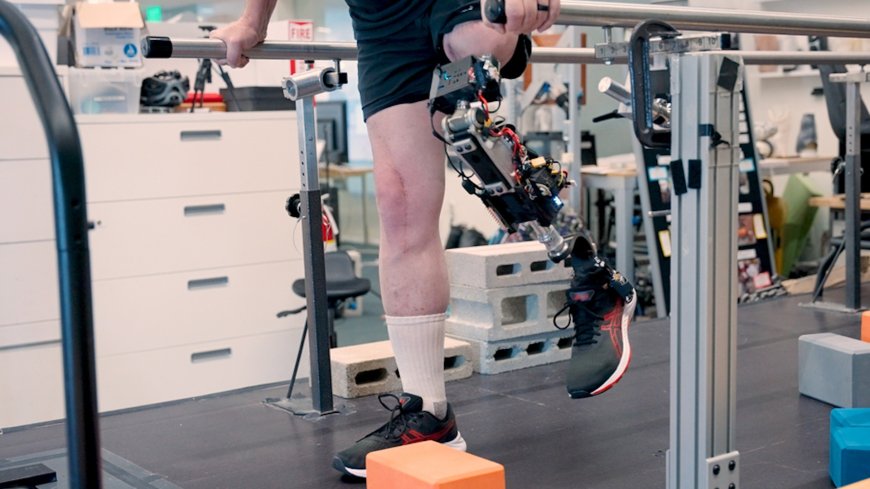Innovative Bionic Knee Enhances Mobility and Body Connection for Amputees
A new bionic knee, detailed in a recent study, offers improved movement capabilities and a stronger sense of ownership for users with above-the-knee amputations. By directly connecting to muscles and bones, this innovative prosthesis integrates seamlessly with the body, providing better stability and comfort compared to traditional prostheses.

A newly developed bionic knee could help people with above-the-knee amputations walk and climb with greater ease than they could with a traditional prosthesis.
The new prosthesis, described July 10 in the journal Science, connects to a user's leg via a titanium rod attached to their femur and permanently implanted electrodes in their leg muscles. In addition to improving movement capabilities, the prosthesis helped users feel a greater sense of ownership and agency over the prosthetic limb, the researchers said.
\"A prosthesis that's tissue-integrated — anchored to the bone and directly controlled by the nervous system — is not merely a lifeless, separate device, but rather a system that is carefully integrated into human physiology, offering a greater level of prosthetic embodiment,\" study co-author Hugh Herr, a professor of media arts and sciences at MIT who develops prostheses that emulate natural limbs and is himself a double amputee, said in a statement. \"It's not simply a tool that the human employs, but rather an integral part of self.\"
Whereas conventional prosthetic legs attach to the user's residual limb with a socket, the new bionic prosthesis interfaces directly with muscle and bones. Doing so allows it to take advantage of a surgical approach to amputations recently developed by Herr and colleagues. In this new approach, surgeons reconnect pairs of muscles that stretch and contract in opposition to each other, such as the residual hamstring and quadriceps muscles, so that they can still communicate with each other. In conventional above-the-knee amputations, these muscles are not reconnected, which can make it more difficult to control a prosthesis.
The new study also introduced a technique to integrate the system into the residual femur at the amputation site. This technique allows for better stability and load bearing than a traditional prosthesis.
\"All parts work together to better get information into and out of the body and better interface mechanically with the device,\" study co-author Tony Shu, a biomechatronics researcher who performed the research while a graduate student at MIT, said in the statement. \"We're directly loading the skeleton, which is the part of the body that's supposed to be loaded, as opposed to using sockets, which is uncomfortable and can lead to frequent skin infections.\"
In the new study, two people who had previously received traditional above-the-knee amputations underwent surgery to receive both the muscle-connecting procedure and the bone-integrated implant. The study compared these people with seven others who'd had the muscle surgery but not the bone implant and with eight people who'd had neither. All of the study participants used the same powered knee prosthesis, albeit connected in different ways, for tasks including climbing stairs, stepping over obstacles, and bending and straightening the bionic knee.
The people who received the combined system performed better in almost all of the tasks than those who received only the muscle-connecting surgery, the team found. They also performed much better than the people who used traditional prostheses.
The two participants who received both the muscle surgery and the implant also showed greater increases in their sense of ownership, or the feeling that the prosthetic limb was part of their body, and agency, or the ability to intentionally control the device, after completing the tasks in the study.
\"No matter how sophisticated you make the AI systems of a robotic prosthesis, it's still going to feel like a tool to the user, like an external device,\" Herr said. \"But with this tissue-integrated approach, when you ask the human user what is their body, the more it's integrated, the more they're going to say the prosthesis is actually part of self.\"
The prosthesis is not yet commercially available. Clinical trials for Food and Drug Administration approval could take about five years, Herr said in the statement.
What's Your Reaction?
 Like
0
Like
0
 Dislike
0
Dislike
0
 Love
0
Love
0
 Funny
0
Funny
0
 Angry
0
Angry
0
 Sad
0
Sad
0
 Wow
0
Wow
0






















































































































































































